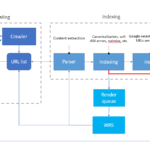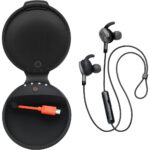Why Is Slipped Disc Becoming More Common in Younger People?
By Dr. Sudhir Kumar, MD DM – Senior Consultant Neurologist, Apollo Hospitals, Hyderabad
Introduction: Slipped Disc Isn’t Just an Older Person’s Problem Anymore
The term slipped disc (also known as herniated disc or disc prolapse) typically brings to mind older adults suffering from chronic neck or back pain. However, an increasing number of young adults between the ages of 20 and 40 are now experiencing this painful condition—often with symptoms like neck stiffness, arm pain, or tingling.
As a neurologist with over two decades of clinical experience, I have seen a sharp rise in cervical disc-related problems in younger patients, especially those with sedentary jobs or high screen-time exposure. This trend is concerning and calls for greater awareness.
What is a Slipped Disc?
A slipped disc occurs when the soft inner core (nucleus pulposus) of a spinal disc protrudes through a crack in the tougher outer layer (annulus fibrosus), potentially compressing nearby nerves. In the cervical spine (neck), this can cause:
- Neck pain and stiffness
- Radiating pain in shoulders or arms
- Numbness or tingling in the hands
- Weakness in upper limbs
- Reduced mobility or coordination
Top 8 Causes of Slipped Disc in Younger Adults
Let’s break down the most common causes and risk factors that are contributing to the increased prevalence of cervical disc prolapse in today’s younger generation:
1. Poor Posture (Text Neck Syndrome)
Prolonged smartphone use, laptop work, and slouching during screen time contribute to forward head posture, which places constant stress on cervical discs.
📌 Fact: Bending your neck at a 60° angle (like checking your phone) exerts over 27 kg of pressure on the cervical spine.
2. Repetitive Neck Strain
Frequent lifting, overhead work (e.g., electricians, gym enthusiasts), or poor exercise form can accelerate wear and tear on neck discs.
3. Sedentary Lifestyle + Weak Core Muscles
Sitting for hours without proper back and neck support causes spinal deconditioning. Weak muscles fail to stabilize the spine, increasing disc injury risk.
4. High-Impact Sports or Accidents
Activities such as wrestling, CrossFit, gymnastics, or even road traffic accidents can lead to trauma-induced disc herniation, especially in untrained individuals.
5. Genetic Predisposition & Early Degeneration
Some younger individuals may have congenital abnormalities like a narrow spinal canal or connective tissue disorders (e.g., Ehlers-Danlos Syndrome), which predispose them to disc problems early.
6. Smoking
Smoking reduces blood flow to spinal discs, leading to faster degeneration due to poor oxygen and nutrient delivery.
7. Obesity
Excess weight increases spinal pressure and leads to chronic inflammation, contributing to faster disc breakdown.
8. Improper Sleep Posture
Using multiple pillows or sleeping without proper neck alignment can strain cervical discs over time.
Symptoms to Watch For
- Persistent neck pain or stiffness
- Pain radiating to shoulders, arms, or upper back
- Numbness, tingling, or burning sensation in arms/hands
- Difficulty turning or moving the neck
- Muscle weakness in the upper limbs
If you experience any of these signs, consult a neurologist for a physical exam and possible MRI scan to rule out disc prolapse.
Preventive Tips for Young Adults (Neurologist-Recommended)
✅ Practice Ergonomic Sitting & Screen Use
- Keep screens at eye level
- Use lumbar and neck support
- Take short breaks every 30-45 minutes
✅ Strengthen Core and Neck Muscles
- Incorporate exercises for posture correction and spinal support
- Avoid sudden jerky movements during workouts
✅ Avoid Unsafe Lifting
- Use proper lifting techniques
- Never lift heavy loads alone or without training
✅ Maintain Healthy Weight
- Follow a balanced diet and active lifestyle
- Reduce systemic inflammation
✅ Quit Smoking
- Improve spinal disc hydration and longevity
✅ Sleep Smart
- Use a single, firm, supportive pillow
- Sleep on your back or side, not your stomach
FAQs: Slipped Disc in Young Adults
Q1. Can a slipped disc heal on its own?
Yes, many mild cases improve with conservative treatment like rest, physiotherapy, and medication. Surgery is needed only in severe or non-responsive cases.
Q2. Is it safe to exercise with a slipped disc?
Gentle exercises under professional supervision can aid recovery. Avoid high-impact or neck-straining workouts.
Q3. How can I tell if my neck pain is due to a disc issue?
If your neck pain is persistent and radiates to your arms or hands, or is accompanied by tingling or weakness, see a neurologist immediately.
Q4. Are office workers more at risk?
Yes. Prolonged desk work with poor posture is a significant risk factor for cervical disc prolapse in young professionals.
Final Thoughts
The rising number of slipped disc cases in young people is not just a coincidence—it’s a reflection of modern lifestyle choices. But the good news is: with better awareness, posture habits, and physical conditioning, this condition is largely preventable.
Remember, your spine is your lifelong support system—treat it with care.
Dr. Sudhir Kumar, MD DM
Senior Consultant Neurologist
Apollo Hospitals, Hyderabad
Follow on X (Twitter): @hyderabaddoctor
Keywords (for search ranking):
- Slipped disc in young adults
- Cervical disc prolapse causes
- Neck pain in 20s and 30s
- Text neck syndrome
- Herniated disc treatment
- Prevent slipped disc naturally
- Sedentary lifestyle spine damage
- Best pillow for neck alignment









